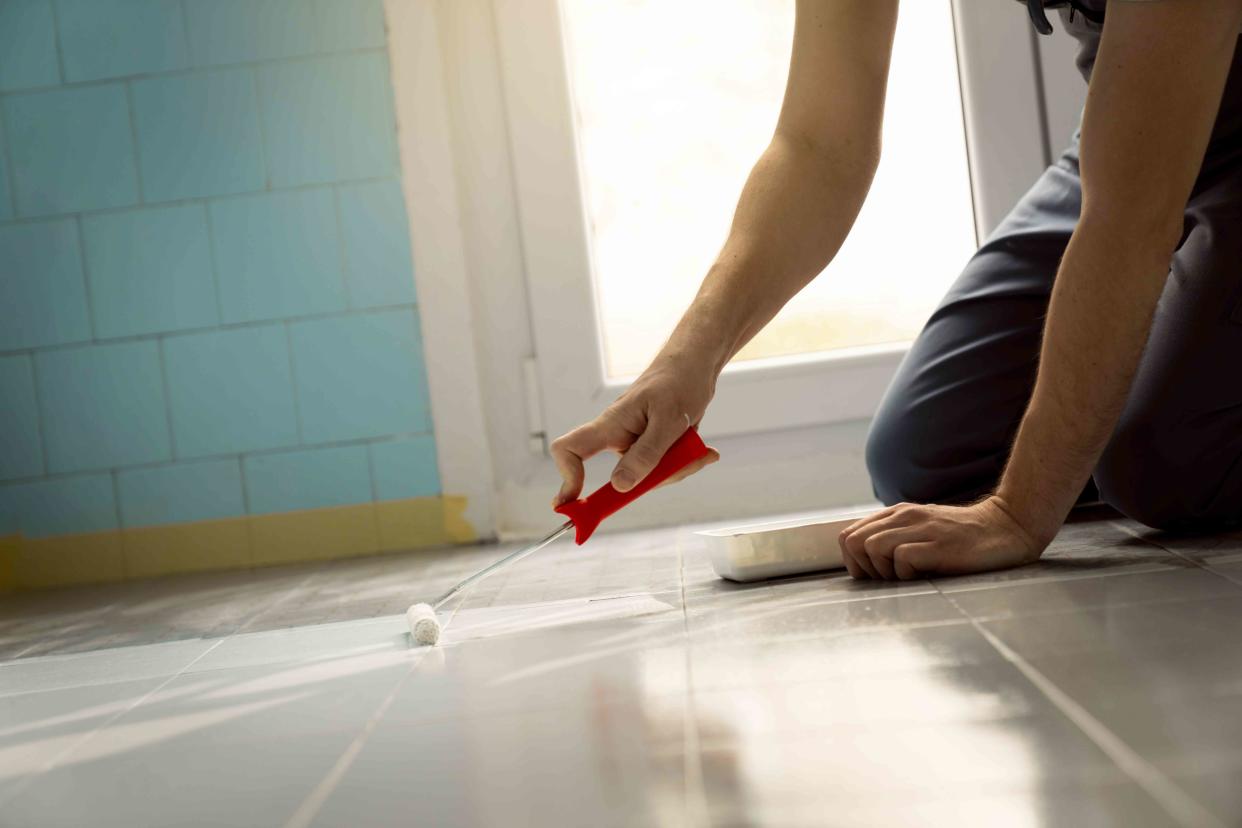Painted Tile Floors: Should You Do It? Here's What to Know

SrdjanPav / Getty Images
If you want to freshen up the tile floor in your bathroom, kitchen, or entryway but don't have the time or budget for a full retiling job, then painting your tile floors is an option worth exploring. Painting tiles is a quick and easy way to spruce up an outdated space or add some personalization to a room.
There are some things to keep in mind, however. Here's what you should know about painted tile floors before you get started.
Is Painting Tile Floors a Good Idea?
While it isn't as durable as replacing the tiles, painting a tile floor is a good idea if you're looking to revamp your space on a tight budget with minimal labor required.
A painted tile floor can last between six months and two years, depending on factors such as how highly trafficked the space is and how much pre-painting prep was done. Experts advise using a bonding primer and tile paint for long-lasting results.
When to Paint Tile Floors (and When Not To)
If you're looking for an affordable, short-term update to outdated tile flooring, painting the tiles is a great option. Unlike a painted backsplash, however, a painted tile floor will receive more wear and tear from foot traffic, meaning the results won't be as long-lasting.
So when is it not a good idea to paint tile floors? If you're looking for a longer term solution for updating your flooring, you might want to start saving for that larger project. If the tiles are severely damaged, with chips, cracks, or crumbling that can't easily be repaired with some caulking, they probably aren't a good candidate for painting, either.
How to Paint a Tile Floor
Deep Clean the Tile Floor
The secret to a long-lasting paint job is to ensure the surface being painted is clean and free of debris. If you apply paint over dirt, dust, or hair, it will not properly set and could leave a bumpy appearance.
Before you pop open a paint can, make sure the tile floor is clean. Fill a bucket with warm water and add a cleaner like TSP (Trisodium phosphate), which is a highly effective cleaner for cutting through grease and grime.
Wearing gloves, dip a sponge or rag in the cleaning solution and wipe down the tile floor until it is completely clean and grease-free. Wipe down the tiles with clear water and allow to fully dry before moving onto the next step.
Repair Tile and Grout Damage
Painting a tile floor will require painting over the grout as well, so you want to make sure it is in good condition and not at risk of crumbling.
Inspect the floor for any cracks in the tiles or chips in the grout. These can be repaired with caulk. While wearing gloves, apply a small amount of caulk to the chip or crack and wipe it level with your finger.
Allow the caulk to dry for at least two hours before moving onto the next step.
Sand the Tiles
Most tile is finished with a glaze that needs to be removed for the paint to adhere to it.
While wearing eye and breathing protection, sand the tile lightly with 220-grit sandpaper. Gently rub the tile with the sandpaper, taking care not to damage the tile's surface. When finished, wipe away any sanding dust using a damp cloth.
Prepare the Painting Area
Using painter's tape, tape off any areas or fixtures you want to protect from accidental paint splashes or overreaches with your paint roller.
Apply Bonding Primer to Tiles
Pour a small amount of bonding primer in a lined paint tray. Dip a paint roller into the primer, rolling out excess liquid on the tray. Using the roller, apply a thin layer of bonding primer onto the tile. After it has dried, apply a second layer of primer and allow to dry completely.
Paint the Tile Floor
Put a new liner in the paint tray and add a small amount of tile paint. Roll out the roller until it is almost dry. Roll the tile surface with one coat of paint, using a paintbrush to fill in any missed spots and touch up edges.
Tip
To ensure the paint doesn't peel away, tiles should be painted with special epoxy paints or tile paints.
When the first coat is dry, apply a second coat of tile paint. Once the paint is fully dried, remove the painter's tape and take in the view of your refreshed tile floor.
Read Next: How to Install Mosaic Tile
Read the original article on The Spruce.

